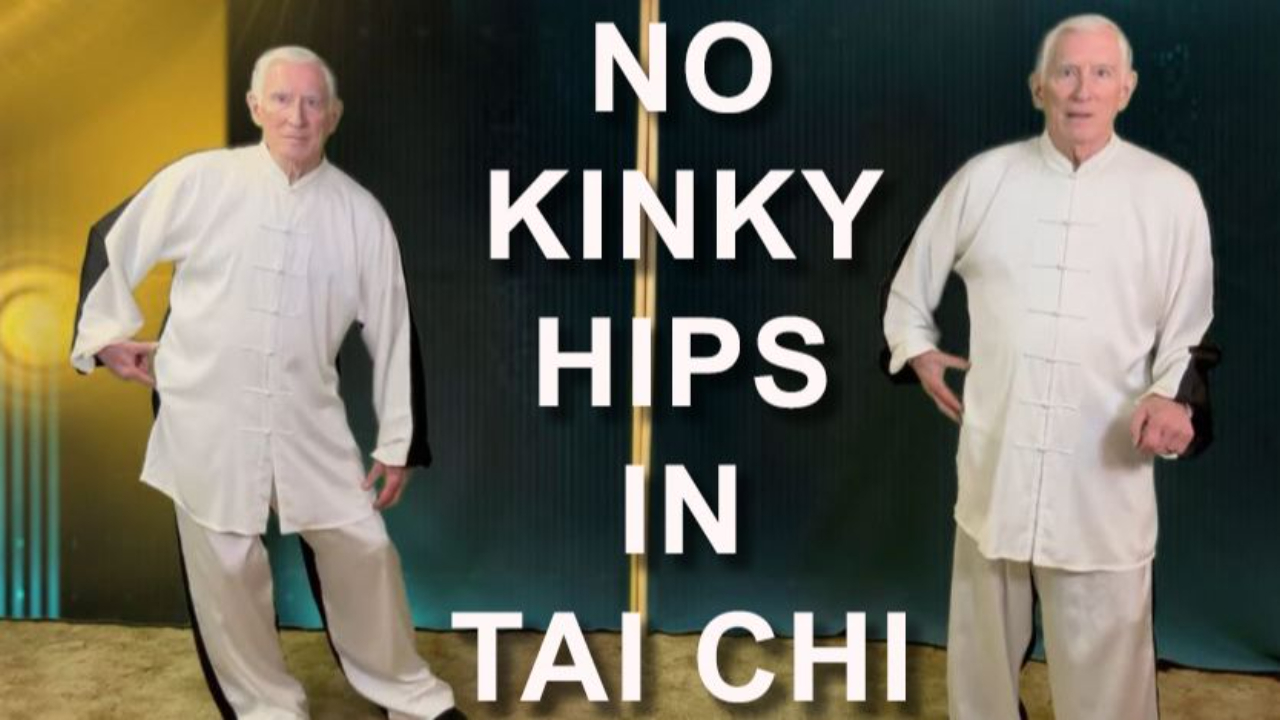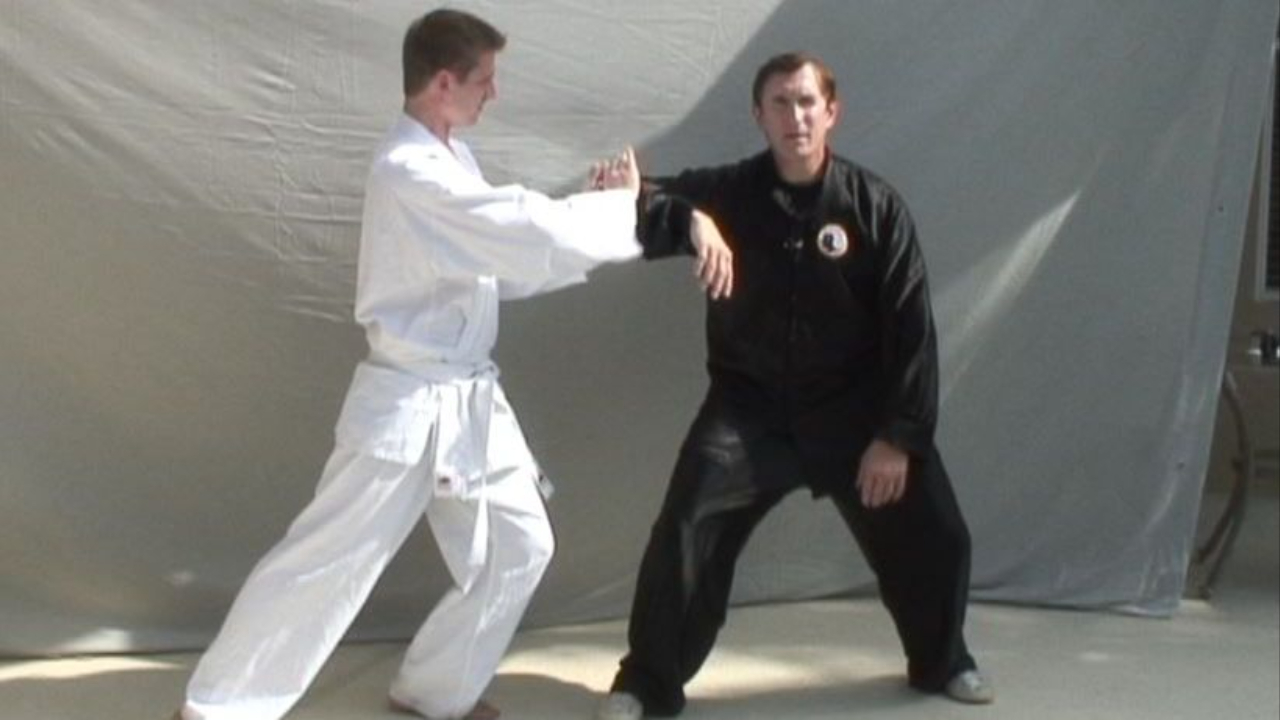Where Does Tai Chi Movement Begin? Geek Out with Me

This is the type of question that gets the juices...errr...I mean the Qi flowing.
Are you ready to geek out with me?
Where does movement begin in Tai Chi (also spelled Taiji)?
During my first ten years of Taiji study, I was given abstract, near-mystical ideas of what internal movement was. I have read countless books and magazine articles that describe internal movement in ways that are, frankly, difficult to decipher. In 1997, I began studying Chen style, which takes a less mystical approach that is grounded in good body mechanics. Not everyone approaches it that way -- you'll find a Chen teacher occasionally who loves the woo woo, but as a group, they're pretty grounded, and that's a good term to use for this post.
Everybody has an opinion, and I am not going to say a different way is the wrong way, but I'll tell you what I think based on the past 37 years of my experience.
Let's pretend I am doing Laojia Yilu. I have completed "Buddha's Warrior Attendant Pounds Mortar" and have...
Throwing Yourself Off-Balance at the Beginning of a Tai Chi Form

I see it in maybe a majority of Tai Chi performances, even by people who are called "master."
At the very beginning of the form, they lose their balance, they throw off their center, by shifting their hips to the right as their left leg steps out to the left.
The purpose of Tai Chi is to maintain your balance and center at all times, both physically and mentally. When a teacher is instructing a student, he first teaches the movements, then he or she should coach students when they are not in alignment. Take a look at this video, then look at your own opening movement. Watch yourself in a mirror, then record a video. Then watch your teacher, and if he is making this mistake, give him a roundhouse kick to the head.
Are You Leaking Energy in Your Tai Chi Movement and Breaking Structure

In my live online Taiji classes this week, I focused on the first two or three movements of the Laojia Yilu form and focused on what it takes to avoid "leaking energy."
You can leak energy throughout the form. When you step, or when you shift your weight, it's very common to see even people who call themselves "master" leaking energy and going "outside the frame."
When you leak energy during your movement, you have a break in your structure, and you put yourself in a vulnerable position, making it easier for an opponent to control your center.
Let's look at the very first movement in a form -- the Opening movement when you start with feet together, then you relax, sink, and step your left foot to the right. Then you shift your weight to the center before your hands rise.
Here is a Taiji instructor who will remain unidentified (this is about principle, not shaming). There are many instructors I could have chosen. In Image 1, he is preparing to step out. Notice the angle of his right...
Empty Force - A Trap Door that Collapses Beneath an Opponent

How I Teach the Internal Arts with a Focus on Internal Body Mechanics

Everything about martial arts changed for me the day I met my first Chen Taiji instructors, Jim and Angela Criscimagna.
On a Saturday morning in early 1998 I drove to their home in Rockford, Illinois, about two hours from my home, to find out what some of these "body mechanics" were that I had recently read about in an internet chat room -- terms like "ground path" and "peng jin."
Jim worked with me for an hour, explaining the difference between the Yang style Taiji I had studied up to that point and the Chen style that he was studying and teaching.
In one hour, I knew I had to start over. What I had been studying was empty. It was based on "chi cultivation" and not on body mechanics.
After 25 years in martial arts and more than a decade in the internal arts, I couldn't find my kua with both hands. This was a problem, considering I had a "black sash" and was already teaching. My students and I were already making a splash at area martial arts tournaments. Now, my style of Taiji had...
Say No to Noodle Legs -- Do Not Collapse Your Legs in Tai Chi

The Ground Path is Step One in Building a Strong Internal Structure

The first concept I introduce new students to is the ground path.
We do exercises with a partner to learn how to establish and maintain the ground path and combine it with peng jin.
But some people who see a photo like the one here make the mistake of thinking, "That's useless. You can't use that in a fight."
In this photo, my training partner Tom is pushing into my right elbow and I am grounding the push into the ground through my left foot.
Tom is not supposed to push with too much force, although as you can see in the picture, this particular drill is used to show that you can, in fact, set up a pretty strong structure using the ground.
The ground path is generally practiced without too much force because the idea is not to make you Superman, to meet force with force. Tai Chi doesn't fight force against force.
The idea is to provide internal strength to your body structure, but as you hold that strength in, for example, a self-defense situation, your goal will not be to meet f...
Turn the Waist More Than the Hips in Tai Chi, Xingyi and Bagua Movement

 If you look at a new student, it doesn't matter what martial art they have studied -- karate, TKD, wrestling, tai chi -- if I ask them to turn their waist, they always turn the hips. They will do it every time.
If you look at a new student, it doesn't matter what martial art they have studied -- karate, TKD, wrestling, tai chi -- if I ask them to turn their waist, they always turn the hips. They will do it every time.A Review of my Internal Body Mechanics Book by Graham Barlow

Graham Barlow practices Yang Tai Chi and BJJ. He also practices Xingyi and Choy Lee Fut.
Graham has written a review of my new paperback book, "Internal Body Mechanics for Tai Chi, Bagua and Xingyi." The review is on his blog, the Tai Chi Notebook.
I invite you to read it. Here is a link to the review:
The book is available on Amazon in the U.S., the UK and Europe. You can also order it through bookstores. One of my website members living in Shanghai ordered it through Barnes & Noble.
Find the links on ordering it in the U.S., Canada, the UK, Europe, and Australia by going to this page on my website.
New Book by Ken Gullette - Internal Body Mechanics for Tai Chi, Bagua and Xingyi

I have read and collected a lot of Tai Chi, Xingyi and Bagua books since 1974. But most of them made the internal arts more abstract and difficult to understand.
So I decided to write a book that I wish I had read in 1987 -- a book that would organize and teach, step-by-step, the fundamental body mechanics that are required for high-quality Tai Chi, Bagua and Xingyi. After 31 years of studying and then teaching these arts, writing a book like this is the right thing to do.
In my opinion, these body mechanics -- ways of moving -- are necessary for beginners to know how to do internal movement for gongfu. There are more things you learn down the road, but I have seen Tai Chi teachers who have spent decades in the art and still don't know these body mechanics.
It involves much more than simple directions such as "turn your foot out 45 degrees and relax."
And it has NOTHING to do with "cultivating chi."
I have included 250 photos and clear, straightforward descriptions in this book. I...
